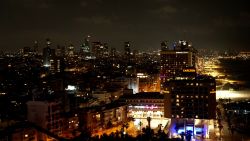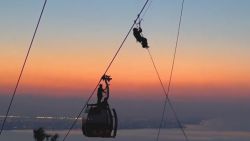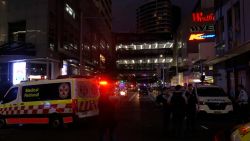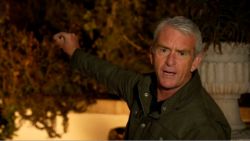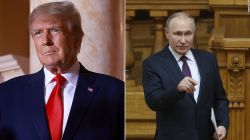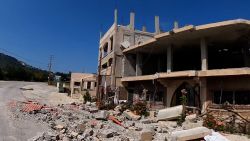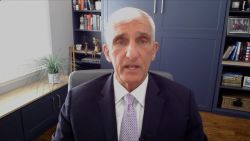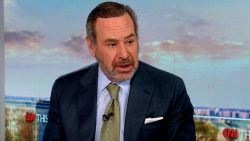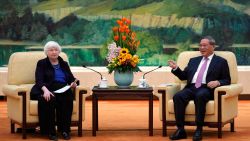Cocaine trafficking from Venezuela to the United States is soaring, even as the country collapses. And US and other regional officials say it’s Venezuela’s own military and political elite who are facilitating the passage of drugs in and out of the country on hundreds of tiny, unmarked planes.
A months-long CNN investigation traced the northward route of cocaine from the farmlands where much of it is grown in Colombia, and found that the number of suspected drug flights from Venezuela has risen from about two flights per week in 2017 to nearly daily in 2018, according to one US official. This year, the same official has seen as many as five nighttime flights in the sky at once.
Planes loaded with Colombian cocaine used to depart from Venezuela’s remote southern jungle regions. Now they take off from the country’s more developed northwest region to reduce their flying time, US and regional officials also said.
Officials involved in combating the deadly trade describe a ridiculously profitable courier system for the Venezuelan government. “Drug smugglers are more and more exploiting the complicity of Venezuelan authorities, and more recently the vacuum of power,” said one US official. Every shipment of cocaine from South America is so lucrative that the planes flown by traffickers are cheap in comparison; most are used only once and then discarded or set on fire upon arrival.
A sizable fraction of the profits go to countries through which the drugs pass, from the jungles of Colombia through Venezuela and often to the Honduran coastline. A confidential 2018 US radar map of the plane routes seen by CNN shows their departure from northwestern Venezuela’s Zulia region, their passage north to the Caribbean, and then their sharp turn West toward their destinations in the remote farmlands of Guatemala, on the Honduran coastline, and some in the Caribbean. From there, the drugs are shipped up to Mexico and then distributed to American cities.
One US official estimated that in 2018 alone, 240 metric tons (265 tons for US readers) of cocaine crossed into Venezuela from Colombia to be flown out of the country. Other officials involved in combating the drug trade said that estimate was conservative. So much pure Colombian cocaine, when cut and distributed, could fetch around $39 billion on the streets of the US, according to an estimate by the United Nations Office on Drugs and Crime for CNN.
US officials recently expressed concern that a proposed ban by President Donald Trump on all types of aid to Honduras, Guatemala and El Salvador would create a “bonanza” among the Venezuelan-led traffickers, as US aid to these three Central American countries specifically targeted the cocaine trade. “Right now, it’s wide open,” said one US law enforcement officer, “then it’ll just be a free for all.”
Years of allegations
For years, the US has accused high-ranking Venezuelan officials of drug trafficking. Today’s accelerating drug trade is a symptom of the urgent need for cash inside Venezuela’s crumbling hyperinflation economy, and rampant corruption among the Maduro government’s senior officials, multiple officials said. Colombian officials who would rarely be quoted on the record also said that the drug smuggling has recently involved Colombian leftist guerrilla group ELN working with the Maduro military.
In 2017, former Venezuelan Vice President Tareck El Aissami was sanctioned by the US Treasury for overseeing or partially owning “narcotics shipments of over 1,000 kilograms (2,200 pounds) from Venezuela on multiple occasions.” In March, El Aissami, now Venezuela’s minister for industry, was indicted in New York for facilitating drug trafficking.
He did not respond to the new charges, but tweeted two days after they were unsealed: “LOYAL always! ANTIIMPERIALISTS always !! PATRIOTS always !! CHAVISTAS ALWAYS !! WE WILL OVERCOME!!”
In May 2018, Diosdado Cabello, the leader of Venezuela’s National Constituent Assembly and embattled President Nicolas Maduro’s number two, was also sanctioned for being “directly involved in narcotics trafficking activities.” He has replied there is no evidence of his involvement in trafficking, and said of sanctions against him in general: “If there are persecuted politicians, those are the Venezuelan officials sanctioned by the US. You can keep your sanctions.”
Many other Venezuelan officials have faced similar US accusations, which the Venezuelan government has outright rejected. They did not comment for this report, despite several requests.
Venezuela’s scramble for cash, owing to hyperinflation caused by economic mismanagement, has led to an increase in the risks taken by pilots. Another US official said they were often former commercial airline pilots who used to fly passenger jets. “Thirty planes roughly have crashed in the last three-month period, according to some reports,” said one US official.
The scale of the operation was confirmed by a government official in the region, who said the flights use around 50 clandestine runways in the northwestern region of Zulia in Venezuela. The drug cargo planes usually fly with the transponders that emit a signal identifying them to radar systems switched off.
Secret runways
CNN gained access with the elite Honduran military force known as Fusina to visit areas of Honduras’ Moskitia region where the drug-smuggling planes from Venezuela land on secret runways.
Tail-fin markings on nearly all the planes found by CNN in Moskitia show they originated in the US. The first US official told CNN that dozens of planes had been bought at US auctions by shell companies and then shipped south.
Some of the planes lay damaged, rusting and exposed on the edge of makeshift former airstrips, rendered unusable by large craters created by Honduran military explosives. Others were hidden, submerged in the bend of a river, yet visible from the helicopter.
Honduran military officers told CNN the traffickers had managed to reach an understanding with local fishermen on how to recover cocaine lost in accidents or interceptions by law enforcement. If a smuggler anticipates he might be caught, he throws the cocaine overboard, attached to a flotation device. Such bundles usually weigh 30 kilos (66 pounds), and fishermen are paid $150,000 if they hand them back to the cartels.
While US technological assistance has helped reduce the number of illegal drug flights coming out of Colombian territory to almost zero, traffickers have an easy alternative just across the border in Venezuela. “One of the problems we face is that the border area is very large,” Colombian Colonel Mauricio Gonzalez told CNN. “We’ve stopped the flights that try to depart Colombia with drugs, but narcotraffickers take advantage of the areas we cannot control.”
Crossing the border
Ongoing tensions, in which Colombia has recognized Venezuela’s opposition leader Juan Guaido as its interim president, meant few Colombian officials would mention Venezuela by name. But it was clear that most of the cocaine grown in Colombia’s Vichada border region is trafficked across the long, porous eastern border.
The Colombian Air Force flew CNN over Vichada, to see the dozens of “trochas”, or tiny pathways, along which pure cocaine powder or less refined paste is trafficked. Small clearings in the forest where coca leaves are harvested, and tiny white shacks – suspected of being cocaine laboratories – were easy to spot.
The Colombian helicopters are not allowed to fly closer than five miles to Venezuela’s actual border, and stay above 2,300 feet to avoid risking the machine-gun fire of drug traffickers below. The helicopter CNN flew in dropped leaflets on the villages below, encouraging locals to respect the environment they lived in, an oblique code for turning their backs on the drug trade.
Once inside Venezuela, the drugs are then whisked through military checkpoints and escorted or waved on by the army, allege US and regional officials and several Venezuelan army defectors.
A defector from the Venezuelan border patrol told CNN that it was once his task to pick out trucks carrying traffickers’ cocaine and ensure they passed through the border swiftly. He said this happened as often as three times a week, during the five-year period he served in the border region.
“Brainwashed with food handouts”
“The cars that crossed with both weapons and drugs were pick-up (trucks),” the defector told CNN, hiding his identity and location for fear of reprisals. “We would be told the color and make of the truck, and when (it would come) – usually at just after dawn or dusk.”
Speaking in hiding with his family in Colombia, he said his senior officers provided precise instructions. “Everything was coordinated by the brigade commander. He’d send a lieutenant to tell you what needed to cross, and this was arranged high up above. Those who didn’t agree were swapped out… Automatically.”
The defector described how tensions mounted in the early months of 2019, as the power struggle between Guaido and Maduro ramped up inside his border region. His unit was almost confined to barracks, but permitted to let the vital border contraband continue at pace.
“We were locked on the base” when not on duty, he said. “The general would say: ‘Everyone must be with us. Leave, or speak against the government – you’ll get arrested.’”
“They had us brainwashed with food handouts,” he added, referring to the subsidized food boxes that help state employees deal with the devastating impact of hyperinflation on family food purchases.
“One night, I couldn’t take it anymore. I went home, and told my wife, ‘We leave for Colombia!’ My son started crying and son said: ‘Dad what are we going to do?’ But I knew if they stayed without me they’d be captured or interrogated.” He and his family fled across the border at 3 a.m., using a route the he had noticed was being badly guarded.









